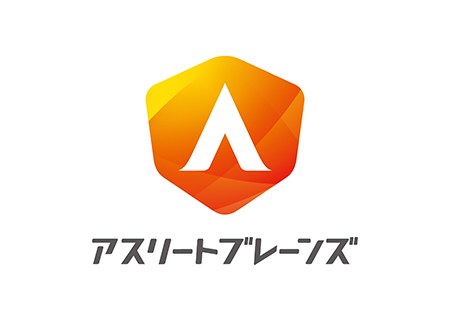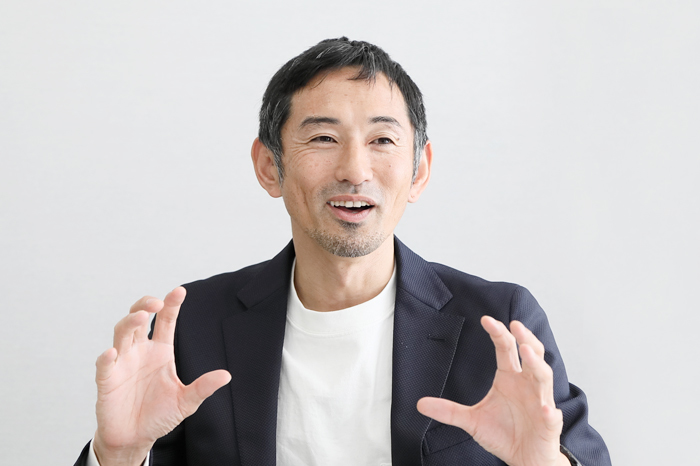A serialized interview column where Mr. Dai Tamesue freely discusses "things on his mind right now." The only set theme is "What is autonomy? What is tolerance?" Faced with unreasonable demands from a mysterious "interviewer," Mr. Tamesue shares his thoughts on various "things on his mind." Well then. What kind of stories will come out this time...? Stay tuned.
──Continuing from last time (#24), we'll once again explore the theme "The World as Seen by an Athlete."
Tamesue: Thank you for having me.
──Last time, you shared your perspective as an athlete in solitary sports like track and field or judo, where you compete alone. How does "the world seen by athletes" change when it comes to team sports like soccer, rugby, or basketball?
Tametsu: In team sports, "time" becomes a major factor in how athletes "see" things.
──Time, you say.
Tamesue: Exactly. It's the ability to quickly process information received by the eyes in a short time. You could also call it perceptiveness. However, here's the thing. According to research by a certain university professor, when comparing the abilities of, say, Japanese high school soccer players and players from Italy's professional league, at first glance, they don't seem that different.
──Huh, that's surprising.
Tamesue: Yet, when you compare them in the world of hundredths of a second, thousandths of a second, and ten-thousandths of a second, a huge gap emerges between them. In other words, what separates their abilities isn't the power to predict, but the speed of prediction. Time is what governs the difference. And I believe it's not visual acuity, but intuitive power that controls that time. And to enhance that intuitive power...
──You mean to observe the situation vaguely?
Tamese: Exactly.
──To "vaguely" observe, to look without really looking. That was the keyword from last time (#24).
Tametsu: It's the complete opposite of how kindergarteners play soccer. With the kids, every single one is watching the ball. Their eyes are fixed only on the ball. Pros are different. They vaguely observe the entire pitch—teammates, opponents, and of course the ball—and when they sense "this is it," they instantly, intuitively, sprint forward and score.
──It's a bit of a stretch, but it perfectly captures the theme of this series: "Mastering the Pace."
Tamese: I believe this "vague" observation is something only humans can do. Vague observation means seeing with a mix of conscious and unconscious awareness, just taking it all in. AI has beaten humans at Go and Shogi, but it still can't naturally do something like looking far away while grabbing a cup right in front of it.
──I see. Somehow, that makes me a little happy. Is this ability to "look vaguely" also used in "dynamic visual acuity"?
Tamese: It might not fit the exact meaning of "gazing blankly," but in terms of "seeing intuitively in a short time," it's probably close. When a batter in the box has to decide if the pitcher's throw is a fastball, forkball, or slider, there's no time to think, "Hmm, where should I focus my gaze?" In that sense, it's probably more about seeing with the brain than the eyes. I'm no baseball expert, but I think players who track the ball with their eyes rather than their imagination can't become truly elite.
──People often say "mental imagery training" is important, but I can't quite "imagine" what that "image" is supposed to be (laughs). So I tend to lean toward the mental aspect, like it's more of a heart issue. But when you say "seeing with the brain," it somehow clicks.
Tamura: For example, table tennis players apparently don't just see with their "eyes"; they seem to "hear" that "clack, clack" sound with their "ears." When you ask the players themselves, they all say in unison, "I don't remember doing that!" Another similar example is Mr. Nobuharu Asahara (former 100m sprinter), a member of Athlete Brains. He apparently had the sensation of hearing the starting pistol not with his "ears," but with his "back."
──It's true in any field: when you train relentlessly and sharpen your senses, every part of your body becomes an "eye," a "nose," or an "ear." A potter's palm, for instance, must feel like it has countless eyes.
Tamura: Conversely, this also leads to the phenomenon of "seeing without truly perceiving." Take a pebble on the road, for example. It's visible to the eye, right? Yet, you don't notice it until someone points it out. That's because it hasn't been "named" or the brain has judged it "not worth naming."
──I see. Ah, when you notice a 500-yen coin lying there, you really move your pupils to look at it, don't you?
Tametsu: I think corporate marketing efforts are similar. "How many people are actually seeing it?" "Why aren't they noticing all those products we've displayed on the shelves?" "Could the problem be that they haven't been properly named?" And so on.
──This is starting to sound like a Web Dentsu Inc. article (laughs). (Continued in #26)
(Interviewer: Web Dentsu Inc. News Editorial Department)
From the Athlete Brains Production Team, Hibi
The second installment of an athlete's perspective. You can't become top-tier just by seeing with your eyes. It's not about hearing with your ears, but feeling with your back. That's why being "vague" is important—not visual acuity, but intuition. In the business world too, perhaps outstanding businesspeople (including executives) aren't seeing numbers/proposals/the field with their eyes, but intuitively.
Even in our daily work, where we start planning from that "sense of something being off," this conversation made me want to try looking things "vaguely." Athlete Brains offers new perspectives on how we approach and think about work. We look forward to your continued support.
Athlete Brains Production Team: Dentsu Inc. / Akinori Hibi (3CRP) · Genta Arahori (Late Bureau)
Athlete Brains, led by Dai Tamesue.
For details on this team that connects the knowledge cultivated by athletes to solving challenges in the world (businesses and society), please visit here.












